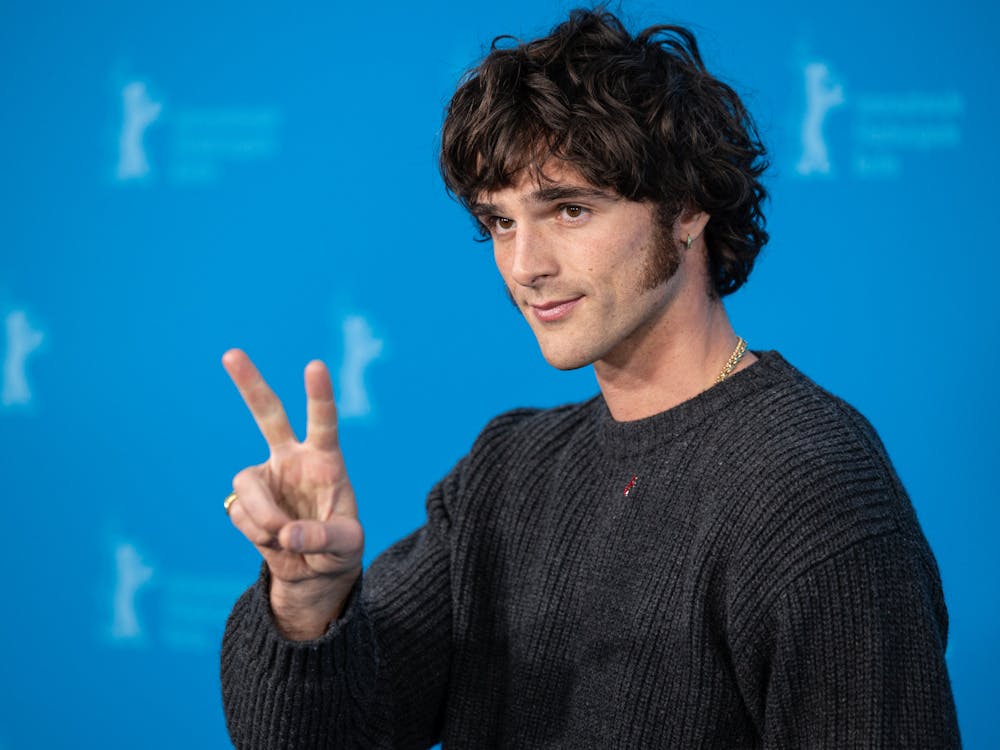Paul Thomas Anderson has an obsession with the past. His dynamic body of work is vast and varied in genre, but all of his films operate with a sort of disinterest in the modern world. He has several pictures backdropped by the ‘70s (Boogie Nights and Licorice Pizza), a few post-war stories (The Master and Phantom Thread) and a historical epic in the late 19th century (There Will Be Blood). Even Punch-Drunk Love, his most contemporary film until now, with phone sex lines and ‘80s songs, is more fascinated with remnants of the past than it is interested in being a present-day love story. One Battle After Another is different; it’s today’s most relevant love story of a father and a daughter in the midst of eerily familiar political turmoil.
One Battle After Another starts with a prologue crafted like a war-induced flashback: sharp, rhythmic and urgent. “Ghetto Pat” (Leonardo DiCaprio) is an explosion specialist for the French 75, an underground revolutionary group, who is being tested for the first time as the group attempts to free imprisoned migrants at a California detention camp. Here, Pat catches the eye of fellow radical Perfidia Beverly Hills (Teyana Taylor). Meanwhile, Colonel Lockjaw (Sean Penn), the leader of the detention camp, becomes sexually infatuated with Perfidia because of his racial fetish for Black women.
As Pat’s relationship with Perfidia develops, so does Lockjaw’s obsession with her. Eventually, the French 75 is dissolved through Lockjaw, who successfully manipulates Perfidia. Taking the newborn he fathered with Perfidia, a baby girl named Charlene, Pat runs away to a small town. Pat becomes Bob and Charlene becomes Willa, seemingly leaving their radical lives and their dangers in the past.
The prologue features about 80% more content than what’s been outlined. The montage is an impressive technical feat. It covers bank robberies, anti-abortion senator bombings, shootouts, postpartum depression, assassinations and power-kinky sex in under half an hour. Despite how short it is, it has more than enough content to establish the exact atmosphere of an America consumed by corruption. Tonally, it shifts everywhere from black comedy to tragedy, which works well with Anderson’s precise direction to create an exhilarating and affecting backdrop for the rest of the story.
After the prologue ends, the narrative jumps 16 years in the future. Willa (Chase Infiniti) is now a teenager who puts up with the eccentricities of her middle-aged, pot-addicted dad who still harbors an equal amount of contempt and paranoia about their government. Their secluded lives are interrupted by Lockjaw, a steroidal soldier who has only gotten more unnerving with age. He’s being recruited to be a member of the country’s most elite white supremacist group. However, before he can be fully inducted, he has to clean up any stains he might still have: the surviving Bob and Willa.
Thomas Pynchon’s postmodernist novel Vineland serves as Anderson’s loose inspiration for One Battle After Another. This is Anderson’s second Pynchon joint, and, unlike Inherent Vice, it isn’t penned as an adaptation of the original. One Battle After Another is more of Anderson’s creation than anything else it might have been inspired by. He takes Vineland’s father-daughter relationship and mixes it with post-Reagan reflections on totalitarianism, but he ends with almost none of the conclusions Vineland has.
Vineland has a strong “television killed the world” belief wrapped around it. Meanwhile, One After Another has no desire to explore the insidious nature and worrying ubiquity of computerizing everything. This element is a crucial plot point in Vineland, but Anderson opts to depict characters constantly staring at their phones as the only reference towards this major thematic component of the novel.
Reading Vineland before watching One Battle After Another doesn’t give any meaningful rewards. Anderson is much more optimistic in his view than Pynchon is, so the two works have quite opposing attitudes towards left-wing revolutionaries (their endings exemplify this — One Battle After Another’s doesn’t even touch the bleakness of Vineland’s). If anything, trying to project Pynchon’s framework onto the film is distracting. Going into One Battle After Another with a mindset familiar with Pynchon’s Vineland is a futile exercise in comparison; the two are thematically and tonally too different.
Vineland and One Battle After Another share a vaguely similar premise and a small selection of corresponding characters. Anderson incorporates some cameos, and he certainly does his best to mimic Pynchon’s humor and naming conventions. Bob Fergurson is no Zoyd Wheeler, but the Christmas Adventurer Club, which is the name of the hyper-racist secret society Lockjaw hopes to join, is memorable enough.
Notably, Lockjaw is a great stand-in for the novel’s Brock Vond, an authoritarian prick who is inconceivably but undeniably weird. Pynchon has a great understanding of the dynamics between political extremism and sexual perversion; how the two interact and contradict with each other in a disturbingly unique way. Anderson has incorporated that through Sean Penn’s performance: Penn plays a caricature of right-wing delusions, but he nails the exact amount of funny, strange and scary the character needs to be.
The other supporting performances, from Benicio del Toro as Willa’s karate instructor who runs a hidden refugee operation for undocumented immigrants to Regina Hall as Bob’s former stoic comrade who returns to help Willa, are almost as excellent as Leonardo DiCaprio and Chase Infiniti are in their leading roles.
Bob Ferguson is the most likable DiCaprio character by far. Late career DiCaprio has mastered the capabilities needed to play a sincerely well-meaning but bumbling father haunted by his disappointments more than anything else. Chase Infiniti (with a name like that, she was destined to star in a Pynchon movie) is a newcomer who not only fully holds her ground with storied movie star actors like DiCaprio, but bests him on several occasions. When she’s face-to-face with Lockjaw for the first time or when she appears in the final car chase, Infiniti captures Willa with pinpoint agency and fear that surpasses the nuances of DiCaprio’s Bob.
Willa is a character who has to be inspiring without being naive; she’s a kid inheriting the ghosts of her parents’ revolutionary dreams. Infiniti makes Willa far more nuanced than the script alone suggests, with such magnetic, subtle acting choices that make her big-screen debut a must-watch demonstration of prodigal talent.
The most significant and interesting change from Vineland is One Battle After Another’s inclusion of Black women. Anderson’s script depicts how misogynoir operates in a society where an infatuation with Blackness can still be co-opted and weaponized into further subjugation. Through Willa’s mixed-race identity, Anderson might have embedded the text with some of his personal worries about raising his own biracial children. However, Willa’s presence isn’t only a shoe-in for Anderson’s life. She represents the difficulties of navigating a mixed-race heritage when both sides of your identity are at odds in value by society and, ultimately, how to reconcile with a diametric sense of self.
Even with this inclusion of a severely flawed and biased system, Anderson gives proper space for the Black actresses of his film to be more than props for the faults of ethno-fascism. Teyana Taylor is magnificent as Perfidia. Through her performance, Taylor makes Perfidia more than an inscrutable figure who is defined by her absence. She gives Perfidia sufficient immediacy in the small screen time she does have with commanding, devastating line deliveries. Regina Hall is as impactful through her role as Deandra, who is a moving portrayal of resilience. Hall is the perfect audience surrogate. She wears on her face all the concerns, exhaustion and frustration of dimmed rebellion.
Although One Battle After Another may not be as Pynchonian as Anderson might have wanted, it is undoubtedly American. It captures the far-right racial purists’ neurotic fears, the deep hypocrisy of those who will glean anything for more power and the ever-present grief that it might be too late to save the country you once believed in. Filled with images reminiscent of mass deportations and mirrors of militant brutality, the film not only inhabits the worst of our country, but it reflects the future of the reality forming around us.
Rather than linger in anxiety, One Battle After Another treats the possibility of a better world with sincerity rather than disdain for how it got to this point. Despite his best efforts, Bob became more resigned with age; he is tripped by the pronouns of Willa’s friend, he gives up fighting for the revolution and he is cornered into complicity. However, by the film’s conclusion, Bob and Willa have beat their enemies in a way their opponents could never accomplish; they never had to sacrifice their humanity for happiness.
Regardless of how much power or capital the fascists may have, Bob and Willa, regular people who are doused in all their shortcomings, succeed in getting through it all with unwavering love for each other and for their flawed lives. Bob is angry with his own outcomes, but he eventually sees Willa as the answer to his failures rather than a personification of them. Through Perfidia’s words, Willa is left with an aspiration to follow: “We failed, but maybe you will not. Maybe you will be the one who puts the world right.”
One Battle After Another isn’t Vineland, but that doesn’t mean it isn’t a successful critique or portrait of American society either. The former is an intricate and spectacular watch that maintains an appropriate blanket of dread to convey a country on a downward spiral. And thankfully, unlike Vineland, it is happy to end with a more promising future for its characters and the world ahead.





